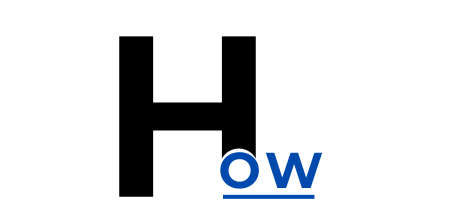Anonymous beta on themes is transforming how app developers, UX designers, and beta testers approach user testing. By allowing users to interact with themes in an anonymous, unbiased environment, it reveals deeper insights into consumer preferences and behaviors. These rich insights empower businesses to refine their designs, enhance user experience, and ultimately offer more engaging products.
This guide provides everything you need to understand anonymous beta on themes, its benefits, challenges, best practices, and how to incorporate it into your development process successfully. Let’s explore how you can harness this innovative approach to take your projects to the next level!
What is Anonymous Beta Testing?
Anonymous beta testing refers to conducting beta tests where participants’ identities remain undisclosed. By removing identity biases, this testing method ensures honest, uninfluenced feedback that focuses solely on the themes, usability, and overall experience of the product.
How It Differs from Traditional Beta Testing
- No Profile Bias: Beta testers remain anonymous, ensuring unbiased opinions.
- Focus on Themes: This method allows testers to focus on exploring the variety and functionality of themes without their responses being influenced by social factors.
- Enhanced Honesty: Participants are more likely to share raw, truthful feedback in an anonymous setting.
Benefits and Challenges
Benefits
- Encourages honesty and authenticity in responses.
- Avoids potential biases caused by demographic or identity factors.
- Focuses feedback directly on product usability and themes.
Challenges
- Establishing trust without personal interaction.
- Ensuring adequate communication while maintaining anonymity.
- Recruiting a diverse set of testers without knowing their entire profiles upfront.
Importance of Themes in Anonymous Beta Testing
Themes play a vital role in designing interfaces that resonate with users. Whether you’re testing themes for a productivity app, educational platform, or e-commerce site, the right visual design and layout can make or break a user’s experience.
How Themes Drive Engagement
- Visual Appeal: A great theme captures attention immediately.
- Functionality: A functional layout determines how easily users can achieve their goals.
- Brand Connection: Themes communicate a brand’s personality and values.
Successful Examples
- Dark Mode Revolution: Anonymous beta testing played a significant role in refining dark mode, now a fan-favorite feature across apps like Twitter and Slack.
- Spotify’s Green Theme: Tested anonymously, Spotify’s iconic color palette became synonymous with its brand identity.
Best Practices for Implementing Themes in Anonymous Beta Testing
Designing Themes
Creating visually appealing and functional themes is both an art and a science. Here’s how to nail it.
- Understand Your Users
Research your target audience and identify their preferences before designing themes. Consider aspects like age, usability habits, and aesthetics.
- Focus on Simplicity
Avoid cluttered layouts. Opt for clean interfaces that make navigation intuitive.
- Test Accessibility
Ensure themes are inclusive by considering colorblind-friendly palettes, readable fonts, and clear contrast levels.
Tips for Success
- Include a balance of light and dark themes.
- Use colors strategically – brighter colors for primary actions and muted tones for backgrounds.
- Test layouts under different resolutions.
Leveraging User Feedback
Collecting feedback is the backbone of anonymous beta on themes. Here’s how to make the most out of it.
Use Specific Questions
Ask testers targeted questions such as “Does this color palette make navigation easier?” or “Did you experience any discomfort using this theme?”
Encourage Detailed Responses
Provide space for users to elaborate on their thoughts.
Iterate Continuously
Adjust themes by integrating tester feedback, then re-test the updated themes.
Case Studies
Successful Anonymous Beta Testing with Themes
Slack
Slack used anonymous beta testing to refine their dark mode feature. Early testers provided invaluable insights into font contrasts and space layouts, leading to its widespread adoption and glowing reviews.
Canva
The popular design tool introduced its “education-friendly” themes after anonymous beta trials with teachers and students. User feedback revealed which designs worked best in classrooms, enabling them to tailor themes for both creativity and usability.
Challenges Faced and Overcome
Figma
During their anonymous beta, Figma faced challenges gathering detailed feedback due to limited communication channels. They solved this by introducing guided surveys, leading to more structured responses.
Tools and Resources
Theme Design Tools
- Figma – Ideal for collaborative theme design.
- Adobe XD – Comprehensive for professional theme projects.
- Canva – Accessible for those without much design experience.
Resources for Learning
- Coursera – Offers courses on UX/UI design principles.
- Dribbble and Behance – Platforms for exploring trending design inspirations.
- Medium Blogs – Articles by UX experts on innovative developments.
Future of Themes in Anonymous Beta Testing
With rapid advancements, the potential applications of anonymous beta testing are expanding.
Emerging Trends
- AI-driven theme adjustments based on real-time user input.
- Gamified beta tests offering incentives for top contributors.
- Virtual reality (VR) testing for immersive designs.
Staying Ahead
Participate in forums, follow industry blogs, and stay active in developer communities to stay updated.
Community and Engagement
Forums and Discussions
Join platforms like Reddit’s r/UserExperience or Stack Overflow to discuss themes and share feedback with fellow testers or developers.
Social Media Integration
Engage with communities on LinkedIn or Twitter. Share progress, gather feedback, and keep users excited about what’s next.
You May Also Like: BabyAC: Your Go-To Solution for Baby’s Comfort and Health
Conclusion
Themes tested through anonymous beta programs hold the potential to level up an app’s look and feel while ensuring genuine, user-centered designs. By using the strategies and tools mentioned here, you can unlock the full power of anonymous beta on themes and keep refining your apps to perfection.
Take initiative today, and start implementing anonymous beta testing to create revolutionary experiences!
FAQs
What is anonymous beta testing?
It’s a method of beta testing where participants’ identities remain undisclosed to avoid biases, ensuring raw, unbiased feedback.
Why are themes important in anonymous beta testing?
Themes enhance user-interface appeal, functionality, and engagement, making them key to a successful anonymous beta program.
What software is best for designing themes?
Tools like Figma, Adobe XD, and Canva are highly recommended for designing user-friendly, attractive themes.
How can I recruit testers for anonymous beta testing?
Leverage platforms like BetaTesting.com, Betabound, or your existing app community to find diverse participants.
How do I ensure anonymous users provide detailed feedback?
Use guided surveys, structured forms, and incentivize testers with perks for providing thorough feedback.











